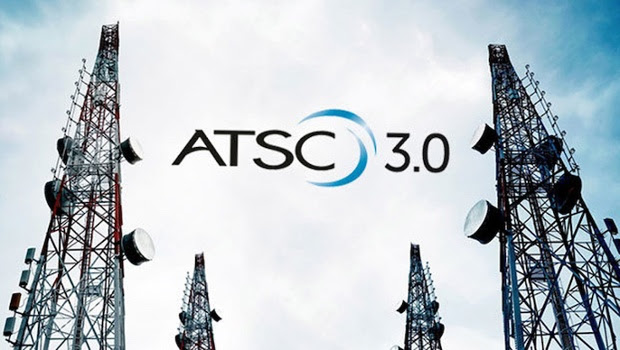ATSC 3.0 Advances on Multiple Fronts in 2024
Results of the U.S. presidential election may set the stage for even better things for NextGen TV

There’s a sense of anticipation among some influential leaders in the U.S. broadcast industry that the nagging issue impeding ATSC 3.0 from living up to its full potential will be resolved with Donald Trump’s election to a second, nonconsecutive term as president.
With the November election, many are hopeful the Federal Communications Commission will embrace deregulating television broadcasting and enable the industry to compete more effectively with Big Tech.
As the year closes, broadcasters are hopeful ATSC 3.0 will be on the FCC’s deregulation list—particularly when it comes to sunsetting ATSC 1.0, thereby freeing up multiple sticks in local markets to transmit NextGen TV and begin delivering on the promise of 3.0.
Looking back from the future on this year, it may one day appear 2024 was the last time broadcasters, CE manufacturers, broadcast vendors and others worked to birth NextGen TV under a voluntary transition dictate rather than moving forward with certainty that legacy DTV would end by a certain date.
The Numbers
As of the close of 2024, 78 of the 210 Nielsen designated market areas (DMAs) were on-air with ATSC 3.0, making NextGen TV available to 76% of Nielsen TV households. Two markets—Jacksonville, Florida, and Davenport, Iowa—launched in mid-December, perhaps closing out the year for NextGen TV launches. Notably, 26 NextGen TV markets were transmitting ATSC 3.0 from at least two sticks at year-end. A few had three when low-power television (LPTV) stations were added to the mix. Taken together, this means more than 500 services were on air from 3.0 sticks in 2024, an Advanced Television Systems Committee spokesperson said.
More NextGen TVs and devices are also finding their way into Americans’ homes. The installed base of NextGen TV products climbed to nearly 14 million, up from the 2023 total of 10.3 million. Every day in 2024, Americans purchased 12,000 NextGen TVs—up from 10,000 per day in 2023, the Consumer Technology Association said.
More CE makers are selling NextGen TVs as well. Early in the year, TCL joined Sony, Samsung and Hisense in offering NextGen TVs in the U.S. In September, Panasonic announced its return to the U.S. TV market with OLED and mini-LED sets with NextGen TV support via a firmware upgrade.
Get the TV Tech Newsletter
The professional video industry's #1 source for news, trends and product and tech information. Sign up below.
Missing from the consumer set roster in 2024 was LG Electronics, one of the companies instrumental in developing the ATSC 3.0 standard. LG decided to sit out selling NextGen TVs in the United States in 2024 after it was ordered in 2023 to pay nearly $1.7 million and $6.75 for every future NextGen TV to Constellation Designs for patent violations. LG appealed the ruling, and in August, Pearl TV filed an amicus brief with the U.S. District Court for the Eastern District of Texas in support of LG.
Pearl TV said it filed the brief because if the damages are allowed to stand not only will LG pull its NextGen TV sets but other CE vendors are likely to do so as well, effectively scuttling the future of TV broadcasting. The appeal is expected to be decided in 2025.
Wins At Home and Beyond
ATSC 3.0 in 2024 saw a number of big wins in the United States and elsewhere. At home, NextGen TV viewers of the Paris Summer Olympics in markets with NBC-owned stations could watch HD coverage with Dolby Vision high dynamic range (HDR) and Dolby Atmos immersive audio over the air via ATSC 3.0.
Gray Television also offered Dolby Vision and Atmos Olympics coverage to viewers in eight of its NBC affiliate markets. In May, the station group offered NextGen TV viewers of WAVE-TV in Louisville, Kentucky, coverage of the Kentucky Derby in Dolby Vision HDR and Dolby Atmos—a first for the event.
NBCU also began offering NextGen TV viewers of its NBC- and Telemundo-owned stations in New York, Los Angeles, Philadelphia and Miami a start-over feature as well as other personalized broadcast experiences made possible by ATSC 3.0.
The fruits of Run3TV, Pearl TV’s NextGen TV middleware app development abstraction layer, were on display at April’s NAB Show from a variety of developers, including Velope, Playanywhere, Gameloop and Roxi. Each promises to enhance the NextGen TV viewer experience in its own way.
ATSC 3.0 datacasting, too, advanced at NAB Show. Sinclair announced its Broadspan datacasting platform; AT&T Business discussed a trial of 3.0 datacasting aimed at commercial rollout for businesses; and Peak3 announced a deal with Sinclair and an impending deal with OTA Wireless (a joint venture of Nexstar Media Group and E.W. Scripps) to resell 3.0 bandwidth as a mobile virtual network operator. While not directly related to viewers of NextGen TV, these datacasting developments have the potential to touch consumers’ lives in multiple, diverse ways.
In March, America’s Public Television Stations (APTS) and Sinclair reached an agreement to ease public TV stations’ entrance into NextGen TV. For public stations not on air in 3.0 where Sinclair is, the station group agreed to provide free-of-charge carriage of virtual channels. In October, Nebraska Public Television in Omaha, Nebraska, was the first to take advantage of the deal with what Sinclair calls “BEST,” or broadcast-enabled streaming television, to reach viewers with its virtual channels enhanced with Advanced HDR by Technicolor.
Outside the U.S., one of the most important ATSC 3.0 developments was a recommendation by the SBTVD Forum, a nonprofit that advises the Brazilian government on digital TV and policy matters, to adopt the ATSC 3.0 physical layer for the South American nation’s TV 3.0 terrestrial broadcast service.
Other noteworthy 3.0 developments around the world include: Jamaica, which completed its 3.0 deployment in 2024; Trinidad and Tobago, which adopted 3.0 in 2024 and is expected to begin deployment in 2025 with completion in 2026; South Korea, the first nation on air with ATSC 3.0 launching 4K UHD in May 2015, where there was a push this year by broadcasters to encourage regulators to allow activation of mobile services; and India, where development of tech and standards for Broadcast-to-Everything (B2X) under the 3.0 umbrella is commencing with the goal of supporting Direct-to-Mobile broadcasting in India and various datacasting applications worldwide.
In October, the city of Calgary, Canada, and Humber Polytechnic B2C Labs announced a collaboration to design, build and test over-the-air datacasting for secured emergency responder communications, targeted public alerting, digital signage, remote education and timing and navigation applications.
Timing and navigation also may ultimately prove to be the killer app for ATSC 3.0 back in the United States. An ATSC 3.0-based Broadcast Positioning System (BPS) that relies on precise time and positioning data inserted into the over-the-air IP stream of NextGen TV broadcasters could serve as an augmentation or backup to the nation’s satellite-based Global Positioning System.
The U.S. Department of Transportation in September 2023 issued a request for information on GPS alternatives. Since then, NAB has led the industry’s efforts to respond and in 2024 was coordinating with major broadcasters and the government to launch a trial. Adoption of BPS by the government as a GPS backup could lead to rapid removal of existing obstacles to nationwide 3.0 deployment given the national security implications of losing the satellite-based positioning system.
The year 2024 will be remembered for numerous developments that advanced ATSC 3.0 for broadcasters and viewers at home and around the world—and that was under a voluntary transition edict. One can only wonder about the pace and number of developments next year if regulators clear the way for 1.0 to ride off into the sunset at home, and others around the world look to deploy a next-generation television system.
Phil Kurz is a contributing editor to TV Tech. He has written about TV and video technology for more than 30 years and served as editor of three leading industry magazines. He earned a Bachelor of Journalism and a Master’s Degree in Journalism from the University of Missouri-Columbia School of Journalism.

